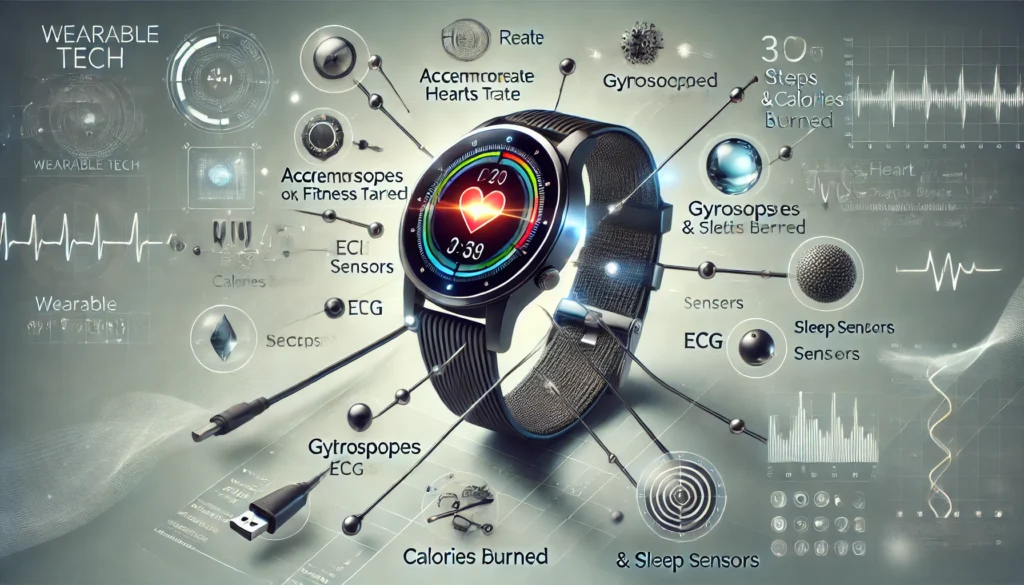The Science of Wearable Tech: How Devices Can Monitor Your Biometrics and Help You Reach Your Goals
The rise of wearable technology has revolutionized the way we monitor and manage our health and fitness. With the popularity of devices like fitness trackers, smartwatches, and earbuds, we can now track our biometric data and make data-driven decisions to reach our goals. In this article, we’ll explore the science behind wearable tech and how it can help you achieve your objectives.
What is Biometric Data?
Biometric data refers to the physical and physiological data generated by the human body, such as heart rate, blood pressure, body temperature, and other vital signs. These metrics give us insights into our overall health and well-being, and wearable tech devices are designed to capture and analyze this data in real-time.
How Do Wearable Devices Track Biometrics?
Wearable devices use a range of sensors and technologies to capture biometric data. Some of the most common sensors used include:
- Accelerometers: Measure movement and acceleration, such as steps taken, distance traveled, and calories burned.
- Gyroscopes: Measure orientation, rotation, and motion, such as exercise strikes, twists, and turns.
- Electrocardiogram (ECG) sensors: Measure heart rate, heart rate variability, and arrhythmia.
- Optical sensors: Measure heart rate, pulse oximetry, and blood oxygen saturation.
- Skin conductance sensors: Measure stress levels, anxiety, and emotional state.
What Can Wearable Tech Devices Do with Biometric Data?
Once biometric data is captured, wearable devices can use this information to provide valuable insights and recommendations to help users reach their goals. Some of the most common applications include:
- Fitness tracking: Monitor daily activity levels, calories burned, and sleep quality to optimize exercise routine and achieve weight loss targets.
- Heart health: Track heart rate, blood pressure, and ECG signals to monitor cardiovascular health, detect arrhythmias, and predict cardiac arrests.
- Mental health: Use skin conductance and heart rate variability to monitor stress levels, detect anxiety and depression, and provide relaxation techniques.
- Sleep analysis: Track sleep patterns, sleep quality, and sleep duration to optimize sleep schedules and improve overall well-being.
- Nutrition and hydration: Monitor glucose levels, hydration, and nutrient intake to optimize diet and ensure proper nutrition.
Real-World Applications of Wearable Tech
Wearable devices are already being used in a variety of real-world applications, including:
- Fitness and sports training: Athletes use wearable devices to optimize performance, recover, and prevent injuries.
- Medical research: Researchers use biometric data to study chronic diseases, such as diabetes, heart disease, and cancer.
- Health monitoring: Healthcare professionals use wearable devices to monitor patients with chronic conditions, such as asthma, and detect potential health issues.
- Personalized medicine: Wearable devices generate personalized recommendations for diet, exercise, and lifestyle changes to prevent disease and improve overall health.
The Future of Wearable Tech: Trends and Predictions
As wearable technology continues to evolve, we can expect to see new advancements in biometric tracking, artificial intelligence-powered insights, and integrated healthcare solutions. Some of the trends we can expect include:
- Increased adoption: Wearable devices will become more mainstream, with greater adoption in the workplace, schools, and healthcare systems.
- AI-driven insights: Advanced algorithms will analyze biometric data to provide personalized recommendations, predictions, and interventions.
- Biometric tracking: The scope of biometric data will expand to include new metrics, such as brain activity, emotional state, and social behavior.
- Wearables in healthcare: Wearable devices will become an integral part of healthcare, enabling remote monitoring, early intervention, and personalized medicine.
In conclusion, the science of wearable tech has revolutionized the way we monitor and manage our biometric data, empowering us to make data-driven decisions to achieve our goals. As technology continues to advance, we can expect even more innovative applications of wearable devices, leading to improved health, wellness, and performance.
